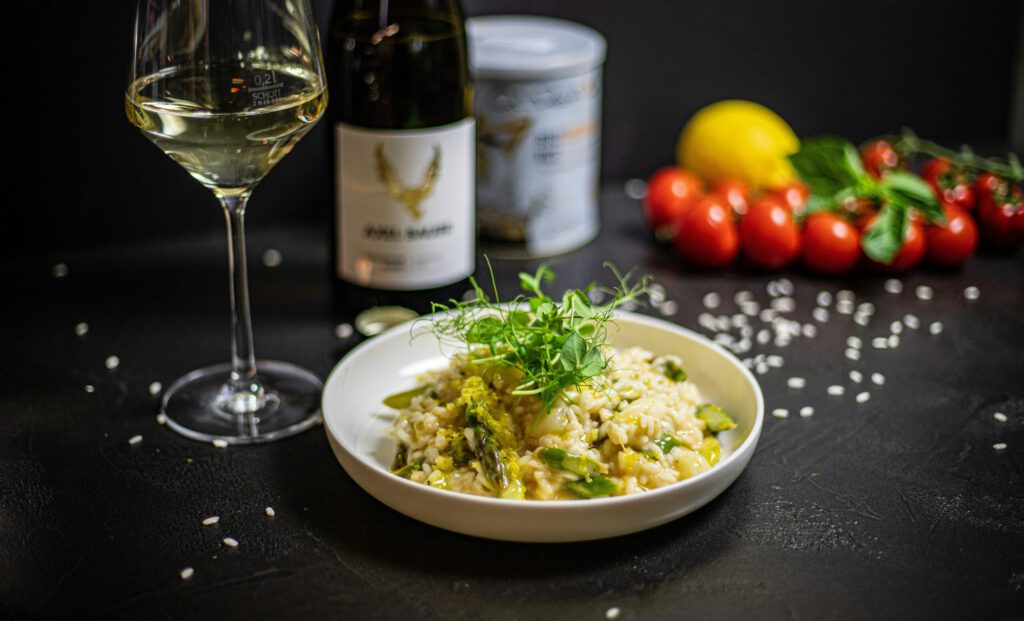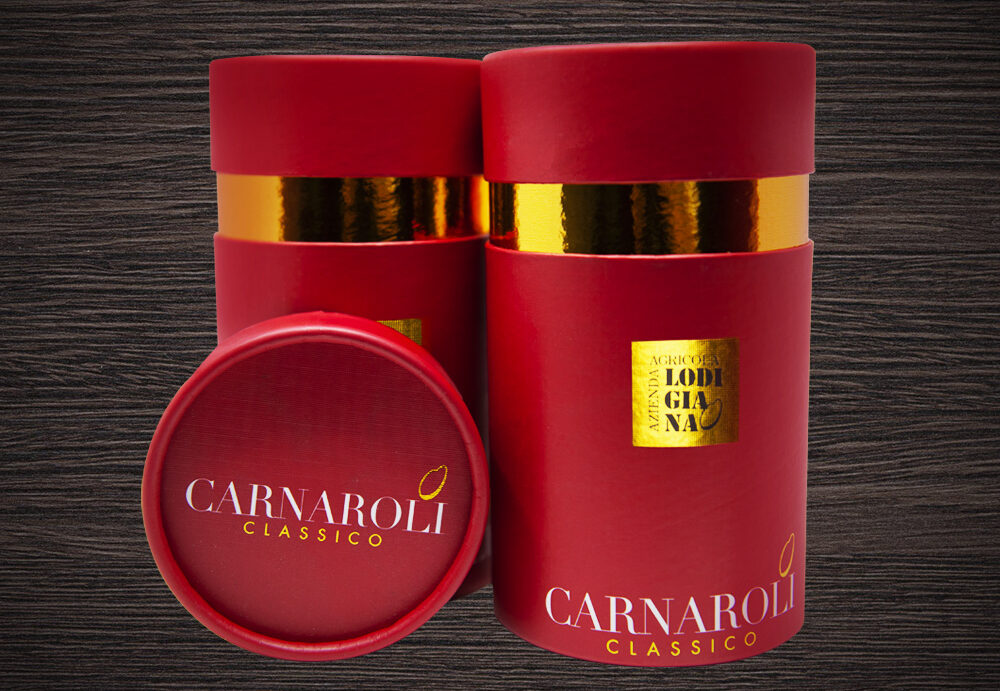
A top Swiss manager said at a dinner in a small circle that ‘everything is the same’ with risotto. Well, even company bosses can be wrong.
Not all risotto is the same.
Gourmets can easily discover this by simply changing a few ingredients in this traditional Italian dish.
The right type of rice
The quality of a risotto depends not only on using fresh stock, good butter and high-quality Parmesan cheese, but also on choosing the right rice.
Many people are unaware of this, as became clear at a recent dinner within an illustrious circle, to which muula.ch was also invited.
For the perfect risotto – whether at home or in a restaurant – you need the right type of rice from a quality supplier.
Rather creamy consistency
Arborio is probably the best-known and most commonly used rice variety for risotto.
The elongated grains soak up the broth and turn into a velvety, creamy consistency that is perfect for showcasing rich ingredients such as saffron or mushrooms.
Arborio is the preferred choice of many home cooks. However, this type of rice, which is slightly stickier, is also widely used in high-end restaurants.
Luxurious texture
Carnaroli, often referred to as the “king of rice varieties”, is, however, even more appreciated by star chefs.
The grains remain firm to the bite during cooking and still give off an incredible creaminess.
Carnaroli is particularly suitable for elaborate risottos including truffles or seafood, as this rice variety intensifies those flavors and offers a luxurious texture.
The slightly larger grain releases a little more starch (amylose).
Silky properties
And Vialone Nano is the favorite for finer, lighter risotto dishes, especially in the Veneto region.
The smaller grains absorb liquid quickly and result in a particularly smooth and silky consistency.
This variety is perfect for delicate dishes such as a summer vegetable risotto or risotto alla pescatora.
Rewarding demand in the kitchen
The Arborio, Carnaroli and Vialone Nano rice varieties therefore offer different textures and flavor profiles that can be selected depending on the dish and personal preference.
Carnaroli is the epitome of a luxurious, firm texture, Arborio for creamy results and Vialone Nano for silky, light risotto variations. Top restaurants often only use Carnaroli or Vialone Nano.
It can therefore be worth asking the chef (who could no doubt be impressed, or otherwise, by your inquiry) to better assess the quality and taste of that particular risotto.
Highlight through maturity
Renowned suppliers of risotto rice are not unknown in Switzerland. Acquerello, for example, is the ultimate in Carnaroli rice.
The rice is gently aged and refined using a patented process, which gives it an incomparable depth and structure.
Top chefs around the world swear by matured Acquerello because of its ability to elevate even the most sophisticated dishes into a culinary highlight.
Frequently encountered Scotti
Riso Gallo is a traditional Italian producer and offers a range of first-class risotto rice varieties, including Arborio, Carnaroli and Vialone Nano.
Gallo is known for its consistently high quality at a good price and is probably most appreciated in private kitchens.

Scotti is another well-known brand that is characterized by its outstanding quality.
In Switzerland, it is available outside of gourmet stores. Scotti Arborio rice in particular is an excellent choice for creamy risottos that reveal the full flavor of the ingredients.
Specialized suppliers
However, there are also many smaller specialist suppliers. From the historic Lucedio monastery comes exquisite Carnaroli and Arborio rice, which has been known for centuries for its outstanding quality.
This is often a real insider tip for lovers of authentic Italian cuisine and is considered almost the best risotto rice.
Ferron is also a small but excellent supplier. It focuses particularly on high-quality Vialone Nano rice.
However, very tasty Carnaroli rice grains are also available.
Top quality in the niche
But quality products are not only produced in Italy, where the famous rice varieties are mostly grown in the Po Valley. Lundberg Family Farms, an American company in California, focuses on sustainable cultivation and offers excellent Arborio rice.
In Switzerland, however, a risotto rice that can be prepared has also been grown for decades in the Maggia Delta between Locarno and Ascona. The product known as Ticino risotto or “Loto” rice comes from Terreni alla Maggia.
Ticino delicacy
With small harvests and so called dry cultivation, i.e. only watered if necessary, it has a creamy delicacy and this product of the finest quality originates from Switzerland.
Risotto is a masterpiece of Italian cuisine, the quality of which depends largely upon the choice of the right rice.
Even top Swiss managers should be taught of the finer aspects.
16.06.2024/kut./ena.





